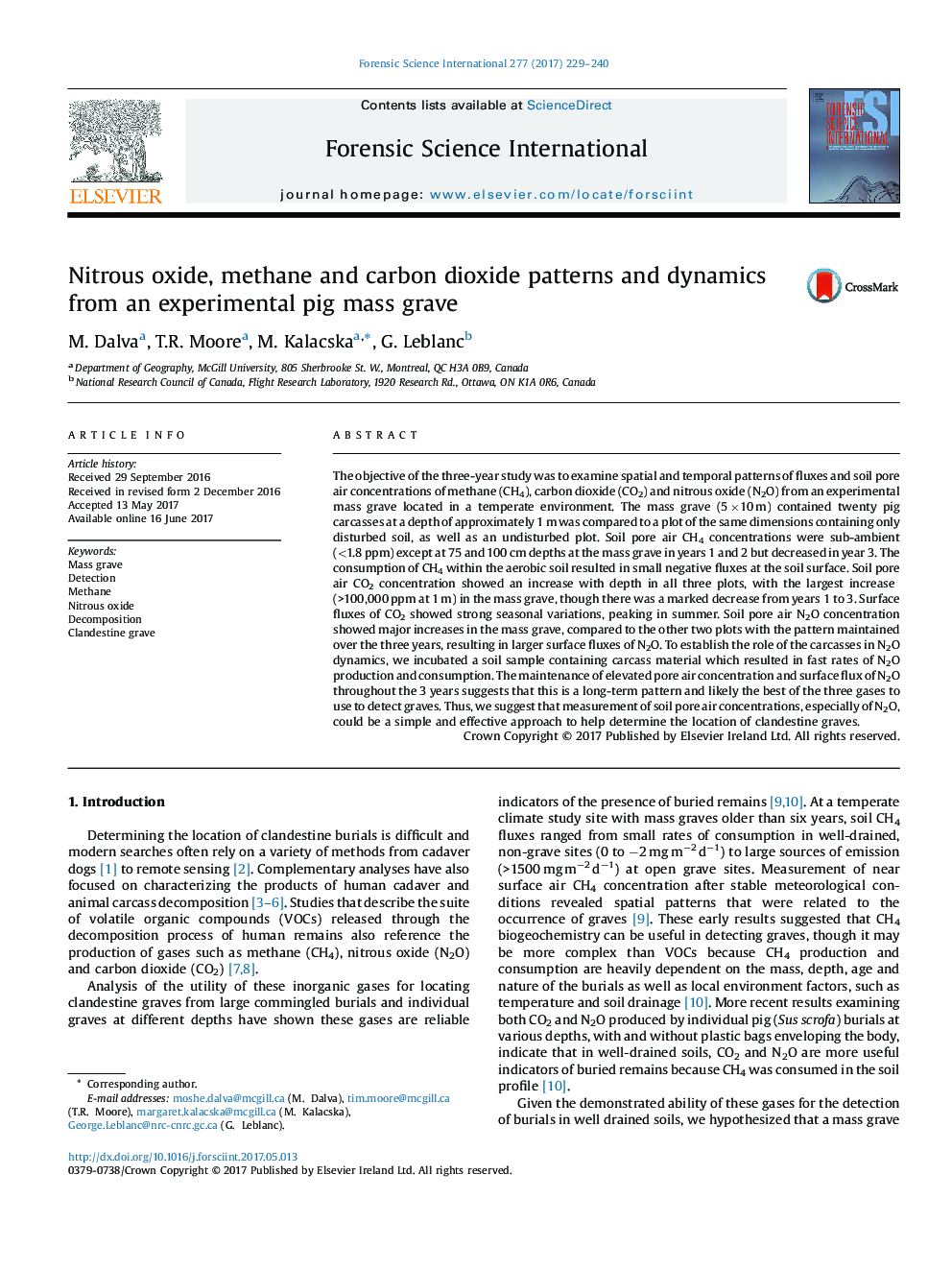| Article ID | Journal | Published Year | Pages | File Type |
|---|---|---|---|---|
| 4760266 | Forensic Science International | 2017 | 12 Pages |
â¢CH4 is useful in detecting graves only when samples are near the carcass.â¢There were significant increases in CO2 concentration, partly owing to disturbance.â¢Increases in concentration and flux of N2O were associated with carcass decomposition.â¢We suggest that changes in N2O can be used to identify graves over at least 3 years.
The objective of the three-year study was to examine spatial and temporal patterns of fluxes and soil pore air concentrations of methane (CH4), carbon dioxide (CO2) and nitrous oxide (N2O) from an experimental mass grave located in a temperate environment. The mass grave (5Â ÃÂ 10Â m) contained twenty pig carcasses at a depth of approximately 1Â m was compared to a plot of the same dimensions containing only disturbed soil, as well as an undisturbed plot. Soil pore air CH4 concentrations were sub-ambient (<1.8Â ppm) except at 75 and 100Â cm depths at the mass grave in years 1 and 2 but decreased in year 3. The consumption of CH4 within the aerobic soil resulted in small negative fluxes at the soil surface. Soil pore air CO2 concentration showed an increase with depth in all three plots, with the largest increase (>100,000Â ppm at 1Â m) in the mass grave, though there was a marked decrease from years 1 to 3. Surface fluxes of CO2 showed strong seasonal variations, peaking in summer. Soil pore air N2O concentration showed major increases in the mass grave, compared to the other two plots with the pattern maintained over the three years, resulting in larger surface fluxes of N2O. To establish the role of the carcasses in N2O dynamics, we incubated a soil sample containing carcass material which resulted in fast rates of N2O production and consumption. The maintenance of elevated pore air concentration and surface flux of N2O throughout the 3 years suggests that this is a long-term pattern and likely the best of the three gases to use to detect graves. Thus, we suggest that measurement of soil pore air concentrations, especially of N2O, could be a simple and effective approach to help determine the location of clandestine graves.
